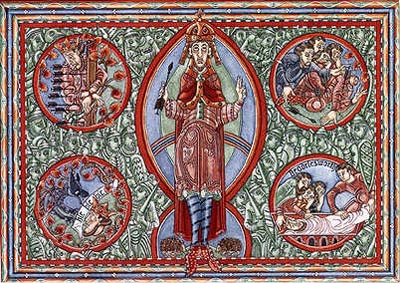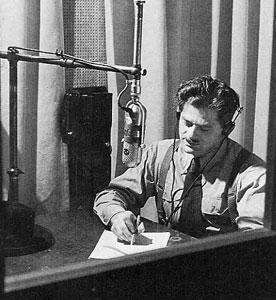I’m a documentary whore. I absolutely adore them. Can’t get enough. The more esoteric the subject, the better. I’ve always enjoyed them, even as an admittedly weird kid, but I really fell back in love with them right after my second son, Griffin, was born. He was not what anyone would call “a sleeper,” and I found myself awake in the middle of the night more often than not. Fortunately, there always seemed to be an HBO documentary on demand, and I started actually looking forward to those sleepless nights when I didn’t have to relinquish the TV to children’s programming.
I like to keep my classroom style varied, and video is instrumental in demonstrating concepts with a single clip that it would take me an hour to explain, and even then, the students wouldn’t know what the thing I was describing actually looks like in practice. This is especially true in my religious studies classes. Being able to immerse them in the sights and sounds of holy places, and hear everyday practitioners and learned experts alike reiterate what I’m trying to teach is priceless.
I’ve assembled a list here of films that I find particularly good at demonstrating core concepts of the philosophy and practice of religion. Many, I’ve used in class; some are just personal favorites. They’re organized by topic the same way I organize my Intro to Religious Thought classes. This is just a handful of the amazing, thoughtful, incisive, unsettling, critical films being made about religion. Some of them are available on Netflix or Amazon Instant Video; many are commonly stocked in libraries. All are worth tracking down.
Sacred Time
The Last Wave, dir. Peter Weir (Criterion Studios, 1979) — And, of course, I start with a movie that’s not a documentary at all–I’m just that perverse. This is a weird, dated, surreal Australian film by the same director as Witness, Gallipoli, Dead Poets Society, and The Way Back. Richard Chamberlain (The Thorn Birds, Dr. Kildare) stars as a Sydney lawyer who takes on the case of some Aboriginal men accused of killing another one. Chamberlin starts dreaming of a huge flood, and his clients disclose tribal secrets that help him decode the dreams–he’s dreaming of the end of a cycle in Aboriginal time, when they will step into the Dreamtime, leaving the white world to be washed away. It’s a confusing, circular movie, but it’s the most effective demonstration of the Aboriginal concepts of non-linear time that exist nowhere in any society outside of Australia or Africa.
Sacred Space
Ganges, dir. Tom Hugh-Jones (BBC Warner, 2003) — A beautifully filmed look at the centrality of the Ganges River to India as a continent and Hinduism as a faith. They explore the river in its environment and its religious functions, all the way from its disputed origins high in the Himalayas, down to the rich delta at the bottom of the subcontinent.
In the Light of Reverence, dir. Christopher McLeod (Bullfrog Films, 2001) — This film is difficult to find, but so well worth it. The three chapters show the importance of the land to three different Native American groups, and how difficult it is to preserve them with their inherent worth isn’t visible or understandable to Anglo-Americans, who think there has to be a building or monument for a place to be holy. This movie will make you scream and cry, and maybe get involved in the fight to preserve these special places.
Sacred Acts
National Geographic—Inside Mecca, dir. Anisa Mehdi (National Geographic Video, 2003) — I had actually wanted to use the BBC documentary Hajj: Journey of a Lifetime, but it wasn’t available on DVD when I went to teach. Now, wonderfully, the whole thing is free on YouTube. But the National Geographic film is great, too. Only Muslims are allowed in Mecca during Hajj (the annual pilgrimage that’s part of an observant Muslims obligations, at least once in his/her life), so an entirely Muslim crew was assembled for each of these two films. They follow a variety of Muslims from all over the world through the hard physical and spiritual work of the Hajj. It’s fantastic for basic literacy about Islam, and experiencing such a moving journey.
Jesus Camp, dirs. Heidi Ewing and Rachel Grady (Loki Films, 2006) Even if you’ve grown up Christian, you may not know that places like the Bible camp in Colorado that’s depicted in this film exist, or what goes on inside them. It’s a harrowing look at the pressure put on kids as young as 5 and 6 to conform to a pretty extreme brand of Christianity. It raises some important questions about how and when to impose your own beliefs on children.
How to Cook Your Life, dir. Doris Dorrie (Lions Gate, 2008) This is a delightful movie about a Zen Buddhist monk and a chef in San Francisco. It perfectly demonstrates the idea that the most mundane, pedestrian things in our lives can become sacred acts with the right mindset. Don’t watch this if you’re hungry.
Sacred People
The Buddha: The Story of Siddhartha, dir. David Grubin (PBS Home Video, 2010) — A lovely documentary blending legend and history to tell the story of Siddhartha Gautama, the Indian prince who achieved enlightenment and became the Buddha.
10 Questions for the Dalai Lama, dir. Rick Ray (Monterey Video, 2007) — This is a very personal film, and though the narrator occasionally gets a little annoying in his self-centeredness, the Dalai Lama is so wise and happy and brilliant and wonderful that everything else fades into insignificance. He talks about the situation of his people’s exile from Tibet, the importance of science, and many of the central ideas of the Buddhist world view. I could listen to him talk forever.
The Devil’s Playground, dir. Lucy Walker (Wellspring, 2003) — This movie follows several Amish teenagers as they launch into a practice known as “Rumspringa,” when they leave the cloistered communities they grew up in and fully experience the “English” world. They swear like crazy, use drugs, go to drunken parties, drive cars, smoke, get jobs, wear jeans. It’s shocking to learn that every Amish person–people we think of as so sheltered and devout–intentionally tests the things of which the Amish life would deprive them. Even more surprising is how many of them choose at the end to leave it all behind and go back to their communities. It’s riveting.
Sacred Words
National Geographic: The Gospel of Judas (National Geographic Video, 2006) — Most people think the Bible has always looked the way it does now, but this film explodes that notion for once and for all. It tells the story of a remarkable document, which purports to be a Gospel written by the disciple Judas, whom the traditional four Gospels of the New Testament says betrayed Jesus to his death. The text is one of the gnostic gospels which interpret the lessons and life of Jesus very differently than the orthodox ones do, and it radically challenges our understanding of the Bible stories everyone hears every Easter. There’s a lot of dramatized action, which always rubs me a bit wrong, but the experts in the video and the story of the text itself more than make up for it.
Sacred Events
From Jesus to Christ: The First Christians, dir. William Cran (PBS Home Video, 2004) — This is a very long, four-part documentary, but it throws into high relief precisely what a messy, confusing, unpredictable origin Christianity had. It gives a ton of valuable information about the Mediterranean world Jesus was born into, the political and social climate that led to his death, the wildly varying (and competing) interpretations of Jesus’ message and life, and the weird horse race to become the “official” version of Christianity that the Roman Empire eventually embraced. It also features most of my favorite historians of Christianity, and it’s a good way to get to know them; many of the authors on last week’s book list are in this film. All this flies directly in the face of the tidy, sanitized, fait accompli history Biblical literalists would have you believe, but the truth is always messier and more interesting.
The Mormons: A Frontline/American Experience Special, dir. Helen Whitney (PBS Home Video, 2007) — Especially in this election year, it’s really important to know the origins and evolution of the only American-born brand of Christianity. This documentary talks to both the officials and the faithful of the Church of Jesus Christ of Latter-Day Saints today, but also its critics. It grapples with both the problematic aspects of Mormonism–such as its attitudes and actions toward Native Americans and African Americans–and the very troubling exercise of federal power to exterminate the Mormons. Whether you find it silly or compelling, it’s all American, and the imprint of this country’s ideals on the Mormon faith is indelible.
 Uncategorized
Uncategorized  1 Comment
1 Comment  The term mandate comes directly out of Latin, which is unsurprising, since most ideas of political power were defined—in one way or another—by those experts in bureaucracy, the Romans. But the etymology suggests something more of a public trust: mandate means “to give into the hand” (manus = hand; dare = to give). Romans used the past participle, mandatum, to mean something given into a person’s care.
The term mandate comes directly out of Latin, which is unsurprising, since most ideas of political power were defined—in one way or another—by those experts in bureaucracy, the Romans. But the etymology suggests something more of a public trust: mandate means “to give into the hand” (manus = hand; dare = to give). Romans used the past participle, mandatum, to mean something given into a person’s care.  So there’s already both a political/legal sense of the word that existed alongside a very spiritual idea of trust and care. And the Romans weren’t the only ones to invest the word mandate with those dual meanings. Ancient China, starting in the Zhou Dynasty (1046-256 BCE), ascribed its rulers with the mandate of heaven. To the Western eye, the mandate of heaven looks like a version of the divine right of rulers. But in China, the endorsement of the divine depended on continued moral leadership (both leadership with morals and demonstrating exemplary morals), and if the leader was not sufficiently generous, just, conservative (in the small “c” sense of conserving tradition and resources for future generations), and observant of religious obligations, then Heaven would revoke its mandate. This could serve as justification—even an endorsement—for popular uprising and the overthrow of the regime. (1)
So there’s already both a political/legal sense of the word that existed alongside a very spiritual idea of trust and care. And the Romans weren’t the only ones to invest the word mandate with those dual meanings. Ancient China, starting in the Zhou Dynasty (1046-256 BCE), ascribed its rulers with the mandate of heaven. To the Western eye, the mandate of heaven looks like a version of the divine right of rulers. But in China, the endorsement of the divine depended on continued moral leadership (both leadership with morals and demonstrating exemplary morals), and if the leader was not sufficiently generous, just, conservative (in the small “c” sense of conserving tradition and resources for future generations), and observant of religious obligations, then Heaven would revoke its mandate. This could serve as justification—even an endorsement—for popular uprising and the overthrow of the regime. (1) But, more than ever, it’s important for our leaders to proceed knowing, as the Romans and Chinese knew, that they hold their power in their hands—they hold the people in their hands. And it is a fragile thing, so easily crushed by inattention and the flexes of muscle demanded by other parts of the job. Though Bush’s presidency represented it in absolutely no way at all, I appreciate the idea of “compassionate conservatism.” The people and their trust must be treated with compassion, not ruthless budgetary efficiency or wasteful military squandering, or neither of them can be conserved for the good of the country’s future.
But, more than ever, it’s important for our leaders to proceed knowing, as the Romans and Chinese knew, that they hold their power in their hands—they hold the people in their hands. And it is a fragile thing, so easily crushed by inattention and the flexes of muscle demanded by other parts of the job. Though Bush’s presidency represented it in absolutely no way at all, I appreciate the idea of “compassionate conservatism.” The people and their trust must be treated with compassion, not ruthless budgetary efficiency or wasteful military squandering, or neither of them can be conserved for the good of the country’s future. 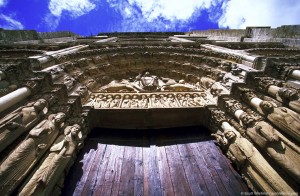



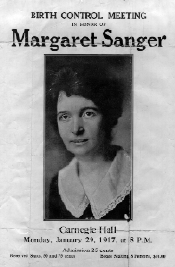
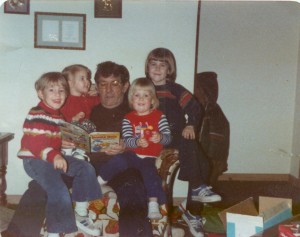


 Reviewers have widely panned the movie as a “
Reviewers have widely panned the movie as a “